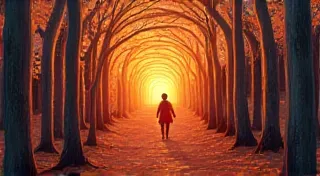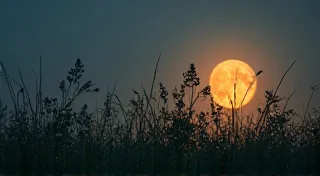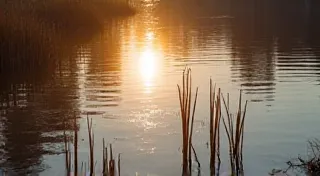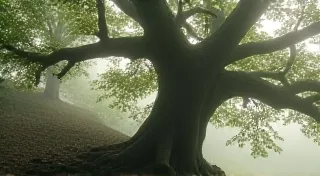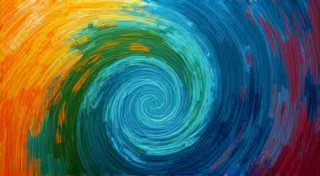The Gardener’s Intuition: The Art of Botanical Observation
There's a quiet hum that vibrates between the earth and those who listen. It's not audible in the conventional sense, but felt—a resonance of knowing. For centuries, healers, midwives, and village elders have possessed a profound understanding of plants, an understanding that transcended scientific analysis. They "knew" when a herb was at its peak potency, when the stars aligned to encourage a bountiful harvest, and how to coax its hidden gifts into a powerful medicine. This wasn't a matter of meticulous measurement; it was the blossoming of an intuition cultivated through generations of observation, connection, and a deep, almost familial, relationship with the botanical world. It's a lost art, in a way, gradually obscured by the relentless pursuit of quantifiable data, but its echoes remain, waiting to be rediscovered.
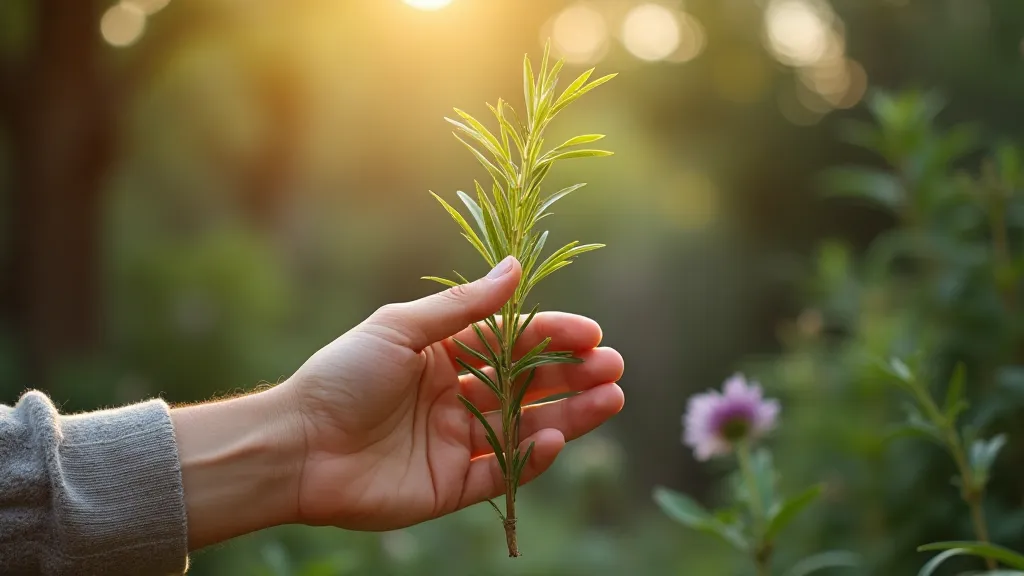
My own journey into this understanding began not with a textbook, but with my grandmother. A woman of few words, but boundless wisdom, she tended a sprawling garden that was both a refuge and a pharmacy. I remember spending summer afternoons trailing after her, ostensibly “helping” with weeding, but really just absorbing the silent lessons she imparted. She didn’t explain the chemical composition of chamomile or the biological function of elderflower. Instead, she taught me to *see*. To notice the subtle shifts in color, the way a leaf curled at the edge when stressed, the particular scent that signaled readiness for harvest. It felt almost magical, this ability to decipher the silent language of plants.
The Echoes of Traditional Knowledge & Botanical Narratives
This ‘knowing’ isn't solely an individual talent; it’s a legacy. Traditional medical systems, from Ayurveda in India to Traditional Chinese Medicine, are deeply rooted in botanical observation. These practices aren't isolated, either; they often intertwine with folklore and cultural narratives, creating rich tapestries of meaning. Think of the symbolic weight of a rose in Western cultures, or the intricate stories associated with specific plants in indigenous communities. The exploration of these intertwined stories, the language of flowers & folklores, is vital to understanding the complete context of traditional herbalism.
They are intricate tapestries woven from centuries of experience, passed down through generations of practitioners. Each region developed its own unique pharmacopoeia, informed by the local flora and the prevailing climate. Think of the intricate herbal remedies of the Amazon rainforest, honed by indigenous communities over millennia, or the healing traditions of the Appalachian Mountains, where generations of healers preserved a wealth of knowledge about the local herbs.
Consider the antique accordion. Not a plant, of course, but a fascinating parallel. A master accordion craftsman, like a skilled herbalist, doesn's just follow blueprints. They listen to the wood, feel its grain, understand its resilience. They know the precise moment when the bellows will resonate with the richest tone, when the keys will move with the lightest touch. Their intuition, refined by years of dedication, allows them to imbue the instrument with a soul that transcends mere mechanics. It’s a feeling, a connection – a sense of knowing that goes beyond the measurable.
Beyond the Numbers: Sensory Perception
Modern science offers valuable tools for analyzing plant compounds – gas chromatography, mass spectrometry, and the like. These techniques can identify and quantify specific chemical constituents, providing insights into a plant’s potential medicinal properties. But they often miss the forest for the trees. They can tell you *what* is present, but they can’t always tell you *when* it's at its peak potency.
Traditional herbalists rely on a holistic approach, engaging all the senses. The smell of a plant can indicate the presence of volatile oils, essential for its therapeutic effects. The texture of a leaf can reveal its moisture content and overall health. The color of a flower can signal the abundance of pigments and antioxidants. They look for signs of balance – a vibrant green hue, a strong and steady growth pattern, the absence of pests or diseases. They understand that a plant’s potency isn’t a static value; it fluctuates with the seasons, the weather, and the lunar cycle.
My grandmother would often say, "The plants tell you what they need." And she was right. It was about listening – truly listening – to the subtle cues that the plants offered. It wasn’t about imposing our own expectations or theories onto them; it was about surrendering to their wisdom. The preservation of such deeply rooted practices, particularly those bordering on being lost, is crucial – often, the shadows of the past hold the key to revitalization.
The Lunar Cycle and the Stars
Many traditional systems emphasize the importance of the lunar cycle in determining harvest times. The waxing moon is often associated with growth and abundance, making it an ideal time to harvest herbs that are used to stimulate growth or increase vitality. The waning moon, on the other hand, is considered a favorable time to harvest herbs that are used to dry, preserve, or cleanse. While the scientific basis for these beliefs remains debated, anecdotal evidence suggests that lunar cycles *can* influence plant growth and chemical composition.
The connection to the stars is even more esoteric, but rooted in the ancient understanding that all things in the universe are interconnected. Certain herbs are believed to be particularly potent when harvested under specific constellations, reflecting a deep understanding of cosmic rhythms. The regional variations in these beliefs are fascinating - each area developed its own unique understanding of the planet, the stars, and how they relate to healing and growth.
Restoration and Reverence: Keeping the Tradition Alive
Just as antique accordions require careful restoration and a reverence for their history, traditional herbal knowledge needs to be carefully preserved and passed on. It’s not enough to simply memorize a list of herbs and their uses; it’s essential to cultivate the observational skills and the intuitive understanding that underpin the tradition. This involves spending time in nature, learning from experienced practitioners, and developing a deep respect for the botanical world. The interconnectedness of these diverse healing systems – the way they build upon one another – is truly remarkable, and highlights the weaver’s knot that binds them together.
Imagine carefully cleaning a neglected accordion, replacing missing keys, meticulously repairing the bellows. It’s a process of uncovering the instrument's inherent beauty and restoring its ability to sing. Similarly, reviving traditional herbal knowledge requires us to look beyond the superficial, to reconnect with the deep-rooted wisdom that has been passed down through generations.

The Alchemy of Growth & Linctus
The practice of herbalism isn’t simply about identifying and utilizing plants; it's about understanding the process of transformation. The alchemist seeks to transmute base metals into gold, and the herbalist seeks to transform the landscape into a source of healing—to turn the wild abundance into potent remedies. The meticulousness and dedication required for this kind of work is extraordinary. It's the alchemist’s garden, where landscape is carefully cultivated into linctus.
Deepening the Connection: Cultivating Intuition
Beyond the technical knowledge of plant identification and preparation, lies the true heart of herbalism: the cultivation of intuition. This isn’t a skill that can be learned from a book; it’s a quality that develops through consistent observation, quiet contemplation, and a deep connection to the natural world. Just as a musician learns to “feel” the music, so too must the herbalist learn to “feel” the plants – to sense their energy, to understand their needs, to perceive their subtle communications.
This requires more than just time spent in the garden; it requires a willingness to surrender to the wisdom of nature, to embrace the unknown, and to trust one’s own instincts. It's a lifelong journey of learning and discovery, a continuous unfolding of understanding that deepens with each passing season. And as with any craft, true mastery comes not from rote memorization but from dedicated practice and heartfelt connection.
A Path to Rediscovery
The gardener’s intuition, the art of botanical observation—it’s a gift that can be rediscovered. It requires patience, humility, and a willingness to learn from the masters—both human and botanical. It’s a path that leads not just to a deeper understanding of plants, but to a deeper understanding of ourselves and our place in the natural world. It’s a quiet hum, a resonant connection—the language of the plants, waiting to be heard.
Perhaps, by listening closely, we can all become a little more like my grandmother—wise, observant, and deeply connected to the healing power of the earth.
